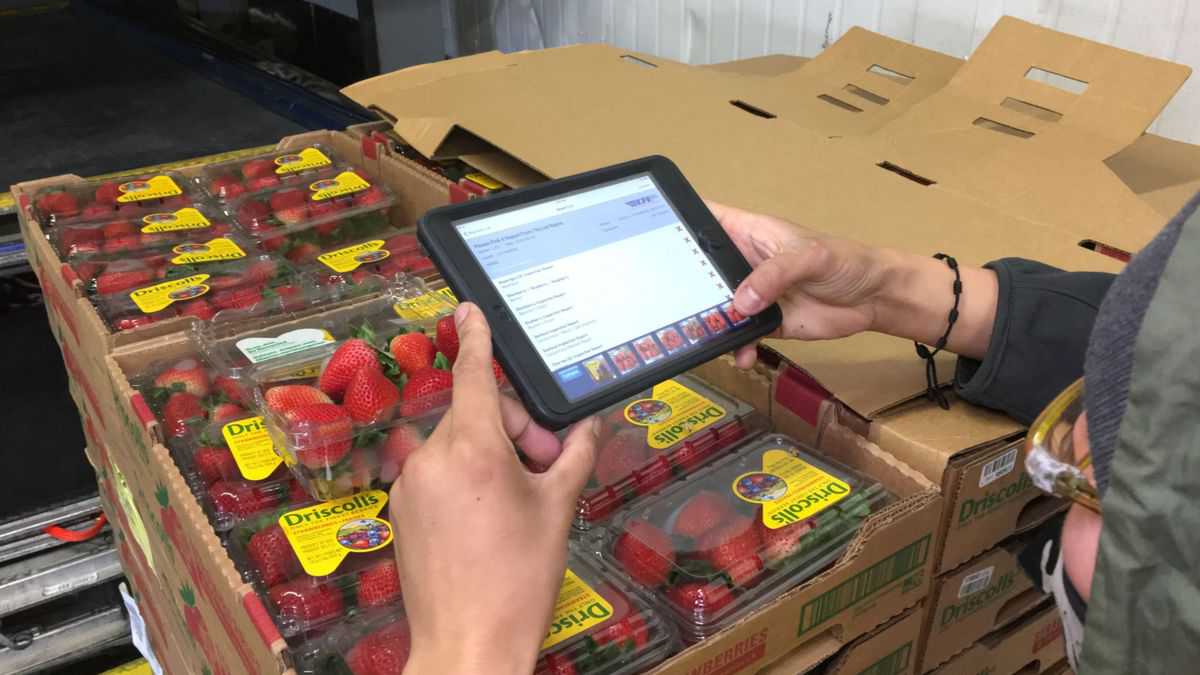The competition for scarce aircraft to transport international cargo is about to get even more intense, especially for exports from the U.S. West coast, as seasonal fruit growers look to squeeze their way onto already crowded aircraft.
Expectations for a strong growing season combined with high fruit demand around the world point to robust exports this year. California cherry harvesting went into full swing earlier this month. After that, stone fruits like peaches and apricots head to market, followed by grapes. Pacific Northwest cherries arrive in early June. And blueberries and blackberries will be shipped in July.
Many producers are increasing their reliance on air transport this season to quickly get their perishable products to customers in Asia and Europe. The extra volume they generate will lead to a further tightening of capacity and push up cargo yields for carriers, logistics managers say.
If air cargo prices escalate too much, however, there is a danger overseas customers could substitute U.S. produce with lower-grade items or ones sourced from other countries.
“One thing about perishable food is there are limits to what consumers are willing to pay. If an export berry gets too expensive, the consumer will buy less, trade down, or pivot to another commodity that is cheaper or provides a similar flavor profile,” Chris Connell, who heads Kuehne + Nagel subsidiary Commodity Forwarders Inc. as its senior vice president for perishables North America, said in an interview. “So carriers and forwarders are trying to find the line where rates work for an air carrier, but where they are also accepted in the final retail price for a consumer.”
For months, shippers of all stripes have exerted extra effort to find flights that aren’t full and paid top dollar for air service. Global capacity is 14% to 18% below pre-crisis levels, by various estimates, because airlines are still not operating most of the long-haul widebody fleet while travel demand remains depressed. At the same time, several factors are driving extremely high shipping volumes for this time of year: a surging global economy and manufacturing sector throwing off the shackles of the COVID pandemic; heavy restocking because of low inventory levels; and rising use of airfreight for COVID medical supplies and vaccines. Many cargo owners are converting to airfreight from ocean shipping because of limited vessel space and port congestion.
While most market attention is focused on large inbound trade lanes from Asia and Europe, capacity for air exports is also much tighter than in 2020. FreightWaves’ SONAR data, for example, shows scheduled outbound capacity from Los Angeles International Airport is approaching pre-pandemic levels.
Last summer, a huge influx of all-cargo charter aircraft carrying personal protective equipment to combat the COVID emergency in the U.S. provided ample return capacity to Asia at low rates for perishable shippers, offsetting space lost when airlines withdrew large passenger aircraft from service. Meanwhile, demand in Asia for raw materials and e-commerce orders from the U.S., along with ocean conversion to air caused by port congestion and shortages of refrigerated containers that are recirculating slowly because of worldwide port productivity issues, is eating up westbound capacity.
“The difference between 2021 and 2020 is that we’re not getting that PPE coming inbound that we can piggyback on the backhaul. So, that is creating a net result of less space capability to ship export goods,” said Connell.
Orlando Wong, CEO of Los Angeles-based Able Freight, said finding freighters available for one-time, or recurring, lease is very difficult and the situation is likely to get worse in the short term. Atlas Air (NASDAQ: AAWW), a major carrier that operates a fleet of 90 large cargo jets, doesn’t have any aircraft available until June or July, he said.
Last year, real estate mogul Sam Zell purchased a majority stake in Able Freight, which focuses on temperature-controlled shipments, especially exports, of produce, meat, seafood, pharmaceuticals and flowers.
The freight forwarder normally relies on passenger airline capacity supplemented by some all-cargo charters but is more dependent on freighters because of the airline sector’s contraction. In the past six months, Able Freight has converted about 600 ocean containers to air to avoid port congestion.
Cherry growers have utilized many more freighters than usual since the pandemic, according to Keith Hu, director of international operations for the Washington State Fruit Commission’s Northwest Cherry Growers division. Companies providing air charters out of Seattle/Tacoma airport and Moses Lake include Air China, Asiana, Atlas Air, China Eastern, Korean Air and Polar Air Cargo. But growers use airports along the entire West Coast because sometimes it can be cheaper to deliver by truck to places such as Portland, Oregon, or San Francisco, Hu explained.
The price of return charters to Asia, Wong said, has jumped from about $150,000 a year ago to more than $250,000 now.
Instead of booking direct flights, freight forwarders have to get creative and move products through alternate gateways, Wong said. That could mean a shipment that normally would go from San Francisco to Incheon airport in South Korea, might now have to move via Hong Kong, Tokyo or Taipei, Taiwan, on a passenger plane, depending on where space is available.
Click here for more FreightWaves/American Shipper stories by Eric Kulisch.
RECOMMENDED READING:
Companies in desperate hunt for aircraft to move air cargo
Real estate mogul Sam Zell invests in perishables forwarder Able Freight













Stephen Webster
E logs in the U S 2 years ago put more pressure to move freight by air. The whole food transport system needs a overhaul.